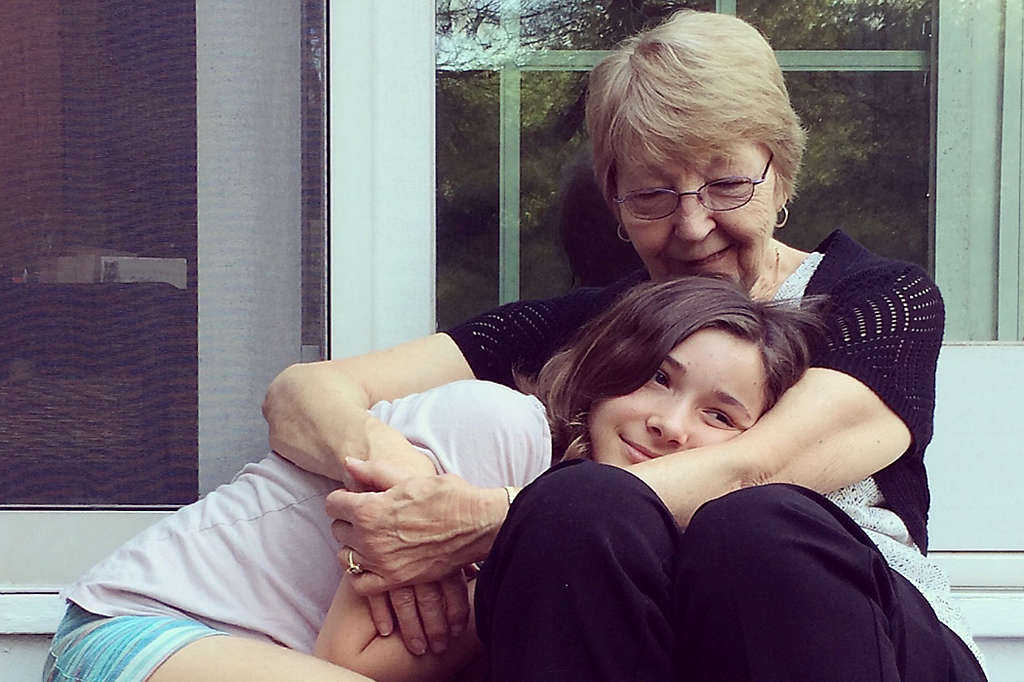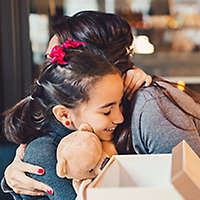BEREAVEMENT RESOURCES
Grief Interrupted


By: Micki Burns, PhD
Licensed Psychologist & Chief Clinical Officer, Judi’s House
For most of 2020, COVID-19 has assaulted our economy and our cultural practices.
It has aggressively pushed its way into the top causes of death in the United States. With upwards of 1,000 deaths a day, some projections predict more than 300,000 deaths by December. Deaths by other causes are simultaneously increasing; a surge in mental health problems comes when many have limited access to health care. We will study the long-term repercussions of COVID-19 for decades to come. But we already know it has one: an increase in the number of bereaved families in our nation where 1 in 14 children are bereaved by age 18. Recent analyses demonstrate that for each COVID-19 death, nine close families are affected. These mourners are beginning their grief journey in uncertainty as our primary rituals and practices are interrupted by social and physical isolation, forcing us to adapt the tools we have as best we can without knowing all the answers.
Over the years, behavioral health professionals have transitioned from linear stage models of grief to more open, and multidimensional process-oriented approaches. For the bereaved, the journey towards healing rarely follows a direct sequence of steps that arrive at a destination, but rather encompasses a multitude of experiences that can vary by the hour and evolve over a lifetime. Along the way, grieving individuals contend with and manage a vast array of grief reactions. Social distancing restrictions are likely to compound these reactions and complicate the process. It is important to acknowledge and validate this interference while creating space for a supportive mourning practice. For children, caring adults play an essential role in establishing a connected and safe environment for grieving. Psychologist William Worden’s proposed Tasks of Grieving provide an understandable framework for reviewing how our current restrictions may impact newly bereaved youth and ways to help.
Task 1: Accept the reality and permanence of the death.
Hospitals, health care facilities, and funeral homes are following state and local guidelines that limit visitors. That means many families are unable to be with their loved one when they die or with their body afterwards. Customary ceremonies such as wakes, sitting shiva, and life celebrations may be cancelled, postponed—or even live-streamed. Although it is a personal decision to include children participate in these practices, the experiences offer concrete opportunities to grasp the reality of the death. Grief ceremonies open conversations about what it means to be dead and help combat magical thinking or the belief that their thoughts influenced or caused the situation. In place of these customs, families may want to consider ways to fill the void by reviewing developmentally appropriate books or videos that realistically tackle death can provide a proxy and establish a common language for future discussions.
Task 2: Allow space for all the cognitive, emotional, somatic and behavioral grief reactions.
We learn early on to categorize our reactions as positive or negative, good or bad, helpful or hurtful, and often,they are reinforced when we suppress the negative, bad, or hurtful. This avoidance typically has short-term gains with long-term consequences including anxiety, depression, and relationship difficulties. For bereaved youth, there must be time for exploring all the dimensions of their thoughts, feelings, body reactions, and behaviors related to their loss, whether that is through quiet contemplation or engaging with social supports. When we are confined at home together without direct access to friends and relatives, time for experiencing grief may be in short supply. This environment can understandably lead to less patience and shorter tempers. By modeling grief acceptance and demonstrating self-compassion, caregivers can begin to intentionally introduce activities and conversations that foster attunement and convey empathy. Ultimately, children need to know that they are seen, they are heard, and they are loved.
Task 3: Adjust to life without the person who died.
When families experience a death loss, they are encouraged to maintain regular routines and provide consistent discipline. But finding rhythm while we are quarantined is challenging. Overnight, COVID-19 changed our world in ways many never imagined possible. We went from the overscheduled hustle of school and jobs to mandated stay-at-home orders with remote work and distance learning. Healthy boundaries are difficult to maintain. Nothing feels ‘normal’. Using existing family habits (e.g., brushing teeth, chores, bedtimes) and adopting new structure and practices (e.g., online schoolwork, weeknight themes) can help families reach the goal of establishing security and predictability. As much as possible, caregivers should protect young children from the adult-sized worries that are prevalent in a world filled with additional uncertainty while answering their questions in a developmentally appropriate way. As children mature, their questions about the death will evolve in tandem with their cognitive and emotional growth. Caregivers should prepare to revisit aspects of the death and the loss by meeting these reflections with openness and curiosity.
Task 4: Establish an enduring connection to the person who died while developmentally moving forward.
Grieving youth fear losing the memory of their loved one—the sound of their laughter, the smell of their hair, the feeling of their embrace. They cherish videos, clothing, toiletries—anything that embodies the person’s essence and keeps them present in daily life. These mementos help maintain a connection to the deceased and open doors for creating meaning from the life they lived. It is important to remind bereaved youth that they will always maintain their relationship to the deceased as a brother, sister, son, daughter, niece, nephew, grandchild, or countless other connections. Ask how they want to honor that relationship moving forward. This task may be the least disrupted by our current conditions and may be bolstered by our extended time at home together. Discussions centered on what children learned from the deceased, how they saw them treat others, and what made them special can contribute to building their legacy. How will you carry them into your future? The process assists the bereaved child in integrating the loss into their life and encourages healthy adjustment.
In the coming years, we will try to measure the significance of the coronavirus for our economy, education system, social norms, and emotional wellbeing. We should also have the fortitude to break down aspects of our death-avoidant culture and establish stronger systems of care that more fully meet the needs of the bereaved—the spouses, parents, siblings, children, friends, neighbors, coworkers, and many others profoundly impacted by loss.
RELATED CONTENT
Subscribe
Want to learn more about grief resources?
Enter your email address below, and we’ll keep you informed about the latest bereavement resources and tools.
Thank you for subscribing!


